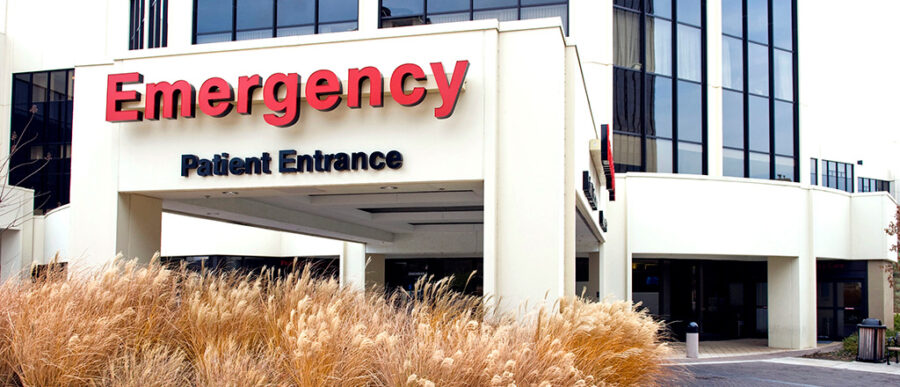Imagine going to a hospital emergency room and being seen by a doctor in less time than it typically takes. That’s one of the promising outcomes of the latest research by Hummy Song, a Wharton professor of operations, information and decisions. Her work examines the management of health care settings with the goal of improving the experience for both physicians and patients. She spoke with Knowledge at Wharton about the real-world implications of her study, “The Diseconomies of Queue Pooling: An Empirical Investigation of Emergency Department Length of Stay.” The paper was co-authored by Anita L. Tucker of Brandeis University and Karen L. Murrell of Kaiser Permanente South Sacramento Medical Center.
An edited transcript of the conversation follows.
Knowledge at Wharton: Can you give us a summary of this research?
Hummy Song: My work is in health care operations, and I’m focusing on how we can design systems and processes that will enable physicians to work more productively. In this particular paper, I’m focusing on queue management systems. How can we better design this queue management system to enable physicians to be more productive?
First, what do I mean by queue management? Think about a line that you waited in this morning. We encounter these things all over the place, and we’re trying to think about different ways of structuring them. In this particular case, it’s a queue structure. In a health care setting, we’re thinking about the length of stay of the patients, the waiting times of the patients and, in this particular paper, an emergency department setting. These are patients in the waiting room of an emergency department. We’re thinking about how you should design those queues as they wait to be seen by a physician.
You can naturally think of two different ways of structuring these queues. One is what we’ll call a pooled queue. This is where you have a single line where the patients are waiting to be seen by one of the many physicians who are working there. They’re not pre-assigned to a particular physician’s queue. The other kind of queue structure that we consider is a dedicated queue. As soon as patients arrive and get registered, they’re assigned to a specific physician’s dedicated queue. From the beginning, you’re waiting in the line that belongs to a particular physician.
Ultimately, we’re asking, “Given these two types of queue structures, which one of these might lead to more efficient or productive outcomes?”
Knowledge at Wharton: It’s a good question for anyone who’s ever been in line at the ER. It can be a very frustrating experience. When you looked at these two types of queues, what did you find?
Song: Surprisingly, because this is counter to what traditional queueing theory would predict, we find that having the dedicated queues actually led to faster throughput time. In this case, there were shorter lengths of stays and shorter waiting times for the patients. We found this to be interesting because it’s counterintuitive, in a way. With the dedicated queues, physicians have a lot of discretion in terms of how they organize their work.
“Surprisingly, we find that having the dedicated queues actually led to faster throughput time.”
When they have these dedicated queues, physicians start feeling a greater sense of ownership and responsibility over those queues of patients. They’re trying to actively think of ways to get people into the beds quicker, which means that they have to think about, “How can I get the patients who are in the beds out faster?” So, they’re doing things differently, like polling for the test results. If they ordered tests, they’re proactively calling up to see what the results are, rather than just waiting for those results to be pushed to them. We can validate a lot of these hypotheses that we generated from our interviews and observations with the physicians through the data that we collect from the electronic medical records of the particular emergency department that we worked with for this project.
Knowledge at Wharton: How can hospitals take this research and apply it?
Song: Since this paper, we’ve spoken with different emergency departments that have started implementing this. Let me backtrack a little bit and say more about our findings and why they were so significant.
We find that these changes I told you about, the reduction in the length of stay and the reduction of the waiting times, are actually quite significant. We’re finding a 17% decrease in the length of stay of the patients and a 9% decrease in the waiting times. When you translate that into numbers, minutes for an average patient who’s coming to this particular emergency department, that’s about a 40-45-minute reduction in that total [wait] time. That’s huge. Given the fact that there are about 200 patients who are showing up to this emergency department per day, that’s a large amount of time, such that they’re able to see about 30 more patients per day with the same amount of resources.
That’s exactly why, practically speaking, these other emergency departments that tend to have pooled queueing systems — most emergency departments in the U.S. still have pooled queueing systems — are interested in thinking about transitioning to a dedicated queueing system.
What are the kinds of things that they’re doing differently? This will differ by emergency department. Each place we speak with is slightly different. But in this case, if there was a computer assignment system in terms of how you assign patients to physicians, you can make that assignment happen essentially at the beginning of when [patients] get registered, rather than when they get into a bed. Typically, what is done with these pooled queueing systems is that they wait until the patient has an available bed to get into to assign the physician. So again, in the waiting room, they’re really waiting in this pooled queue.
When we think beyond emergency departments, thinking about how we might apply these kinds of things, it’s very much a case-by-case basis. I would say the key thing to think about is, are these workers people who have lots of discretion over how they work? If they don’t, I would say pooled queues are still probably more efficient. But if they have that capacity to really change the way they structure their workflow and use their discretion to make those real-time decisions, you might start thinking about these dedicated queues to improve productivity and efficiency in ways you wouldn’t have thought of before.
“We’re finding a 17% decrease in the length of stay of the patients and a 9% decrease in the waiting times.”
Knowledge at Wharton: It sounds like one of the keys here is that the doctors are given ownership over this list of people. Instead of waiting for what comes next, they see what’s next and can think about what they can do.
Song: That’s a really interesting point about seeing it. There’s a separate study, not mine, that has recently come out where having visibility into the length of your queue is really important. So, if you designed this queue where the physicians might not actually be able to see how many patients are waiting, it might not make much of a difference. Because what’s important is you can see, “Oh, wow, I’ve got 12 patients waiting for me. I should really get to them. They belong to me.” If you don’t have that kind of information, maybe it won’t change your behavior.
Knowledge at Wharton: What are you studying next?
Song: Most directly related to this project, with any kind of operations management question, it’s really important to think about trade-offs and boundary conditions. With this paper, we looked at things like quality of care and what it means for utilization. But I want to take it a step further and think less so in an empirical setting, like this paper was, but more so in a generalizable modeling setting.
I’m working with some other colleagues, writing a modeling paper, trying to see what the conditions are under which this might be the case where dedicated queues outperform pooled queues, given different types of work aversion that servers might have. We consider things like whether they’re averse to having high levels of work load or just being busy at all, and that they would prefer idle time. We’re trying to understand, what is the threshold? What are the conditions under which this would be the case? That’s most directly related to this particular queueing paper. But more broadly, I’m very interested in thinking about different levers that we might be able to use to improve efficiency and productivity in these health care settings. Not just the emergency department, but also thinking about inpatient settings or outpatient settings more broadly.
I’ve been looking into things like different ways of leveraging performance feedback that you might provide to physicians, different ways of thinking about matching the supply and demand of hospital beds, because there are all sorts of different patients who show up and different types of beds that are available at different times. Especially given the enormous amount of data that are being collected these days electronically in hospital settings, how can we better leverage that to make predictions that we can act on in real time? Those are the kinds of things I’ve been really interested in.



